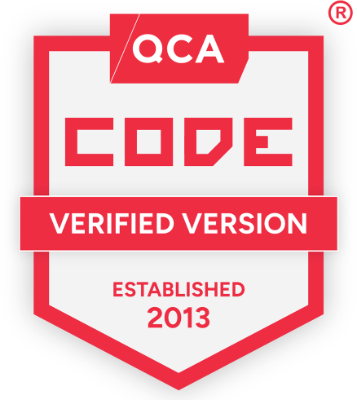Once you have decided to prioritise technology skills enablement in your organisation, you need to start making the changes that will embed it within your working practices.
One of the best ways to do this is by making learning and development a team outcome, not just an organisational one. By empowering your team and giving them the responsibility for driving the process forward, you’ll see your people find their own ways of developing skills and establishing the foundations of a sustainable model for the future.
To kick this process off though, there are a number of best practice approaches developed within engineering communities that you can rely on.
Involve the whole team from day one
A team outcome is one that is defined by the members of the team, not one that is dictated by the management above.
Skills development is often something that cannot be forced upon individuals who are not fully into it, so making learning a team outcome is important. You can and should hire people with experience of creating and participating in skills development programmes, just as you should hire individuals who buy into the concept and display a growth mindset. However, communities of practice, which play an important role in technology skills enablement, can only be homegrown and developed internally.
To ensure your skills enablement strategy works, it also needs to be clear to see from day one of a new employee starting their job. Quality onboarding can make or break the experience of a new role and a structured programme of knowledge sharing plays a vital role in bringing new recruits up to speed with organisational values and delivery expectations.
Setting those high standards and expectations from day one also lays the groundwork for continuous improvement. Therefore, it’s really important that the responsibility of onboarding new staff is given to existing team members. In this way, everyone takes ownership of including and upskilling new starters, resulting in it becoming an important team outcome that everyone recognises.
This regular involvement by different members of the team also directs fresh eyes towards the onboarding process, so it can be reviewed, iterated and improved on an ongoing basis.
Introduce Communities of Practice
As mentioned, communities of practice are one of the best ways to start embedding learning within your organisation.
This is not a new idea, as groups of like-minded people have been gathering and sharing ideas, knowledge, experiences and solving problems together throughout the ages. It is a well established concept, based on trust, openness and the ability to ask each other for help. Open source projects have been based on the principles of communities of practice for decades. The driving factors behind this have been shared goals, values, vision and interest to collaborate with like-minded people.
A good example is the Linux Kernel, the backbone of the internet as we know, which started being discussed and worked on in Usenet newsgroups, email lists and IRC. The Linux Foundation and subset Cloud Native Computing Foundation are brilliant examples of how the open source community of practice has developed and thrived over the last three decades. Now, there are hundreds of thousands of supporters delivering and receiving training, webinars, conferences and communicating with each other.
Over the last few years, the business world has started to embrace communities of practice too. This trend has occurred in line with a greater focus on employee wellbeing, happiness, mental health and support structures for employee development, which are all designed to aid productivity and improve staff retention.
Structured support for employees to gather and form a community of practice within paid working time is now established as a valuable use of their time. The UK Government has been aligned with this approach since publishing the Civil Service Workforce Plan in 2016, a plan that focused on strategies for hiring, retaining and training staff. It is also aligned with the Government’s managing legacy technology programme, which depends on ensuring staff can constantly learn, evolve and keep up with their technology stack.
Make knowledge sharing easy
As your team starts to take on the responsibility for skills development, this needs to be encouraged and promoted as much as possible.
We use a whole range of tools and opportunities to empower staff to share knowledge. On a very basic level, we promote the sharing of ideas using a variety of Slack channels. Although some of them border on communities of interest rather than communities of practice, they are great for igniting ideas and group thought on different topics.
We also invest in the learning and development of every employee by allocating half a day per week away from client work and towards learning. Learn Tech is an opportunity to learn new or develop existing skills, mixed with some more structured learning tracks to deepen employees’ knowledge and understanding of the company’s purpose and objectives. This is a company-wide activity that covers all departments and allows all our people to learn new things, whether they be technical or soft skills.
Learn Tech is also a chance for people to prepare and deliver workshops to colleagues, providing a fantastic opportunity to brush up on those planning, presenting and facilitating skills in a safe environment. Learning by teaching others is the best way to fully understand a topic in depth and creating training content internally can also save you a lot of money on overpriced training courses. This is a constantly evolving programme and we are working with our team’s feedback to keep improving it going forward.
We are also big on delivering showcases. We provide two fifteen-minute showcase slots on a Friday afternoon where colleagues can book and present anything interesting to the rest of the company. This is a great bonding opportunity, as well as being a way to bring some of your whole self to work or show some cool tech you used on delivery. We use showcasing a lot within client deliveries to demonstrate work and gather feedback, so these in-house sessions are a great way to practice presenting and build confidence in your abilities.
Finally, we also encourage everyone to attend and speak at conferences, as well as writing blog posts about topics they can help others with. Conferences allow us to bring new ideas from outside back into the community, so we can test these ideas internally. Writing helps to document our knowledge for internal use and connect with like-minded people from outside.
Measuring outcomes not outputs
As you start to embed all of these skills enablement processes within your organisation, make sure you are measuring them to ensure the activities are worthwhile. When you do, it’s important to focus on outcomes over outputs.
Just as in our software delivery life cycle, we want to be defining outcomes to work towards and not just measuring outputs like the number of bugs fixed or tickets closed. Capability building should be measured in terms of outcomes around behaviour, soft skills development and knowledge growth within the team.
Counting metrics such as technical certifications gained or courses attended shouldn’t be dismissed entirely, as they demonstrate that employees are moving in the right direction. However you also need to consider wider team metrics alongside these indicators of individual success, in order to ensure you are improving the whole team or community’s knowledge.
It is essential that everyone in the organisation is mindful of this and feels empowered to take time to define and achieve outcomes around capability building within a team. This mindset is essential in high performing teams, which are made up of individuals with a diverse range of skills rather than specific siloed ones.
Imbalanced teams reliant on hero developers can produce good outcomes but it’s not a sustainable model we should depend on. Everyone should be equal and able to achieve all aspects of the team’s work and the only way to do this is by giving the team time to grow, share and develop their skills together.
Supporting public sector skills enablement
From 2017, the government began requiring any public sector employer in England with at least 250 staff to employ an average of 2.3% of their staff as new apprentices. As mentioned in my previous blog, this sort of initiative provides a great opportunity for organisations to build a consistent pipeline of engineers with the skillsets they need.
Our own belief in this approach can be seen from the fact we have embraced it ourselves. The Made Tech Academy, which has run since 2017, is a twelve-week training programme that brings individuals from a variety of backgrounds into our company and pays them a full salary as they learn.
After this initial training period, they go on to work on client deliveries. This allows them to continue growing their skills and knowledge, while also bringing the best practice techniques they learned in the Academy, as well as their own fresh ideas, into the public sector. I love working with Academy engineers because their ardour is contagious and they also ensure our communities of practice are continually refreshed with a new batch of talent.
We have used our experience of developing apprentices to help a range of public sector organisations already. Most recently, this involved supporting the HMRC Multi Tax Digital Platform in Bristol with its Apprenticeship programme throughout 2020. Furthermore, as someone who works on the HMRC MDTP project, I have witnessed how developing apprentices has grown into an important outcome across the platform teams that will help maintain and progress the platform for years to come.







